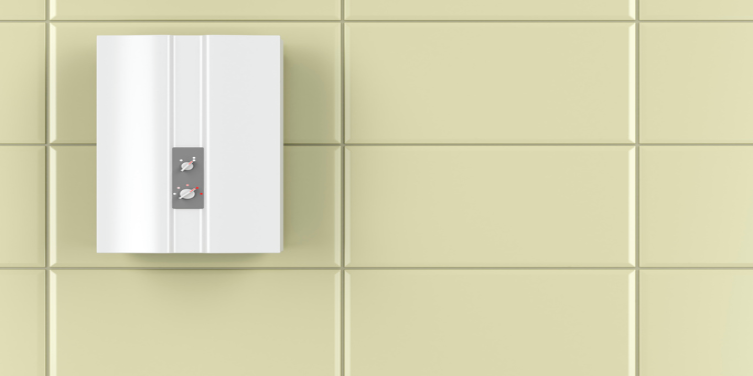
Do the words “cold water sandwich” have you imagining two soggy, dripping wet pieces of bread with who-knows-what between them? This doesn’t sound like the kind of delicious thing your favorite sandwich shop would put on the menu, and you’d be absolutely right.
A “cold water sandwich” is a water heater issue that occurs when you have fluctuating water temperatures, typically, resulting from the overuse/malfunction of a tankless water heater. You may notice that the water is lukewarm for a couple of minutes, and then you’ll get a blast of cold water. This is enough to shock your system and cause you to contemplate all of life’s choices.
The good news is there are ways to mitigate this phenomenon and keep your tankless system operating efficiently long term.
Let Mr. Rooter Plumbing of South Jersey explain!
What Causes a Water Heater to Experience a Cold Water Sandwich?
Tankless systems are measured by how many gallons of water are heated per minute (typically, 2 to 2.5 gallons per minute). If you own a tankless water heater, you know it takes time for the exchanger to heat the water properly. However, you can do everything correctly and still experience various water temperatures that make you wonder if your water heater is on the fritz. Don’t worry. You’re not doing anything wrong. You may just need specific components to fix the inconvenience.
Causes of temperature fluctuations include:
- Simultaneous fixture use – A tankless system will always have a slight delay in heating water, but a cold water sandwich could be the result of using multiple fixtures simultaneously.
- Malfunctioning flow sensor – The flow sensor’s primary function is to measure the water entering the tankless system and transmit information to the control board. A faulty sensor can’t send the correct information, which causes temperature issues.
- Incorrect gas line size – Tankless water heaters require an ample gas supply to operate efficiently. Issues with a cold water sandwich can mean your gas lines are the wrong size and need to be upgraded.
- Mineral buildup – Mineral buildup in water lines can impede your tankless system’s ability to properly heat water, resulting in temperature shifts.
4 Ways to Reduce Cold Water Sandwich
Because a tankless water heater doesn’t have a hot reservoir, water is heated on demand, causing temperature delays and fluctuations. But you don’t have to live with these annoyances. We recommend the four solutions below to make your tankless water heater work more efficiently for your needs.
1. Replace with a Gas Tankless Water Heater
Sometimes, replacing an electric tankless water heater with a gas unit is better to completely avoid the cold water sandwich effect. Gas water heaters expediently adjust water temperature, so the cold water sandwich phenomenon is unlikely.
This option is less cost-effective, as it requires purchasing a new water heater, removing the previous unit, and installing a new one. We only suggest this alternative if nothing else has worked or your electric water heater is beyond repair.
2. Add a Mini Storage Tank Water Heater
Mini tank water heaters hold 5-6 gallons of water and are an ideal option when you need to take the stress off your tankless system. Mini tanks can be wall-mounted or freestanding, depending on where it’s needed. Ensure that your shower has a water flow rate of 1.5 to 3.0 GPM (global precipitation measurement) for optimal operation. This solution eliminates the need for a recirculating system (discussed below) and reduces up to 50% of energy costs.
3. Install a Recirculating System
After a shower, unused water often sits in the pipes and gets cold. This is likely the water you experience with the cold water sandwich effect. A recirculating system creates a continuous loop between the outlet valve and the tankless water heater, giving you heated water waiting in the pipes to be used.
A negative aspect of a recirculating system is energy consumption. Tankless water heaters can be up to 14% more energy efficient. However, a recirculating system may increase energy consumption and shorten the life of your tankless system from the extra strain. We recommend this quick fix as a viable solution if you consistently want hotter water and don’t mind the monetary impact.
4. Select a Tankless System with Delayed Shut-Off
When you choose a water heater, you expect it to have all the necessary components to function properly for your needs. If consistent hot water is important to you, purchase a water heater with a delayed shut-off feature to preserve operation life and cut down on usage.
Mr. Rooter Plumbing of South Jersey Has Water Heater Solutions Galore
Remember to research your options before you purchase a tankless system. List your must-haves, and don’t compromise on something that’s a deal-breaker for you. If you ever need water heater installation, advice, and options, our dedicated team at Mr. Rooter Plumbing of South Jersey is ready to assist.
Call or request a job estimate today.

